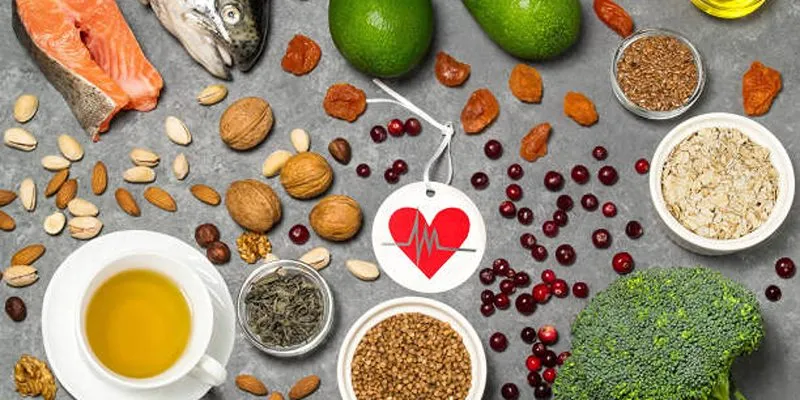High Glutamate Foods: What You Need to Know
Glutamate is one of the most abundant amino acids produced by the human body and is found naturally in various foods. It serves as the main excitatory neurotransmitter in the human neurological system. At normal levels, glutamate provides energy to brain cells, aids in mood regulation, supports memory and learning, and helps maintain a healthy sleep cycle.
Nerve health may suffer if glutamate levels are either too high or too low. Therefore, having the right amount of glutamate in the right places at the right times is crucial for the proper functioning of your nervous system. If you’re considering adding glutamate to your diet and are unsure of the best sources, this article will guide you. Continue reading to learn more!
High Glutamate Foods
Several foods naturally contain glutamate. You can increase their intake if your brain cells produce low amounts of glutamate. Let’s explore these foods in detail:
- Nuts: Walnuts are rich in glutamate, containing 658 mg per 100 grams. Be aware that walnut oil and butter also have significant amounts of amino acids, which may cause allergies in some people.
- Tomatoes: Fresh tomatoes contain about 250 mg of glutamate per 100 grams, making them an excellent source. Be moderate with tomato-based foods like soup and sauce, as one cup of tomato sauce can include up to two tomatoes, with a medium tomato weighing around 150 grams.
- Mushrooms: Dried shiitake mushrooms have approximately 1,060 mg of glutamate per 100 grams. While white button mushrooms contain much less, about 180 mg per 100 grams, those aiming to reduce glutamate intake should avoid mushrooms completely.

- Processed Meat: To restrict glutamate intake, avoid canned, frozen, or deli meats like cured ham, which contains 340 mg of glutamate per 100 grams.
- Seafood: Fish such as anchovies have modest glutamate levels, with 630 mg per 100 grams. Scallops and oysters contain 160 mg and 150 mg per 100 grams, respectively.
- Peas: Peas contain 200 mg of glutamate per 100 grams, more than many other vegetables. Keep serving sizes small to avoid excessive glutamate consumption.
- Starchy Vegetables: While corn and potatoes have relatively low glutamate levels, some individuals may experience issues. A 100-gram portion of corn or potatoes has about 100 mg of glutamate, making portion size crucial for reducing intake.
- Cheese: Cheeses like Parmesan have a distinct umami flavor due to their high glutamate content. With 1,680 mg per 100 grams, Parmesan has the highest glutamate content among cheeses.

Low Glutamate Alternatives
The following foods contain low amounts of glutamate, making them safe additions to your diet if you wish to avoid glutamate:
- Cheddar Cheese: Compared to Parmesan or Roquefort, cheddar cheese has significantly lower glutamate content. It contains 180 mg per 100 grams.
- Blueberries: Fruits like blueberries are safe to eat as they contain low glutamate levels and provide protection against glutamatergic excitotoxicity, which can damage nerve cells.
- Cod, Mackerel, Salmon: For seafood lovers, fish like salmon, mackerel, or cod are good options. Cod has the lowest glutamate content with only 9 mg per 100 grams, while mackerel and salmon contain 36 mg and 20 mg, respectively.
Understanding the Function of Glutamate
Glutamate is an essential neurotransmitter that facilitates communication between nerve cells. After being released, cells reabsorb glutamate in a controlled manner as needed. Glutamate functions include:
- Chemical Messenger: Glutamate transmits messages between nerve cells.
- Energy Source for Brain Cells: Brain cells can use glutamate as an energy source when glucose is scarce.
- Learning and Memory Regulation: Glutamate plays a role in strengthening or weakening neuronal impulses that influence learning and memory.
- Pain Transmitter: Higher glutamate levels are associated with increased pain sensation.
- Mood Regulation: Glutamate malfunction may contribute to severe depression, schizophrenia, and other mood disorders.
After discussing glutamate functions, it’s essential to understand the effects of having too much or too little glutamate:
Too Much Glutamate
Excessive glutamate can lead to various health issues, including:
- Anxiety disorders
- Multiple sclerosis
- Fibromyalgia
- Parkinson’s disease
- Autism spectrum disorders
- Huntington’s disease
- Amyotrophic lateral sclerosis
- Neurodegeneration after traumatic brain injury
Too Little Glutamate
Insufficient glutamate can also cause problems, as it plays a crucial role in neurotransmission, immune, and digestive processes. Too little glutamate may result in:
- Insomnia
- Low energy
- Mental exhaustion
- Concentration difficulties
- Schizophrenia
What Are the Health Benefits of Glutamate?
Glutamate is abundant in the intestines, muscles, and brain. The body produces it, and it’s vital for regular bodily functions. The health benefits of glutamate include:
- Boosting protein production
- Aiding in cellular energy creation
- Controlling inflammation
- Generating glutathione, an antioxidant
- Supporting bone growth and muscle tissue healing
- Promoting the “gut-brain connection” by stimulating serotonin production in the gut and the vagus nerve
Conclusion
Glutamate is the most prevalent amino acid in the human diet, found in meat, soy, tomatoes, mushrooms, and other plant and animal-derived foods. Both excessive and insufficient glutamate levels can be problematic. The best strategy is to consume whole, unprocessed foods to maintain normal glutamate levels.











